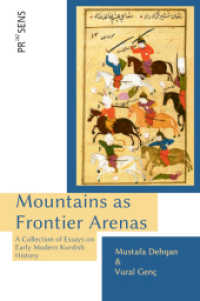Full Description
The continuous demand for Gendering Caste: Through a Feminist Lens (2003) led to this revised edition which analyses the recent socio-economic and political changes that have taken place. Caste-based marriage and control over women's sexuality have been crucial for the continuation of the caste system in India. Thus, caste and gender are linked. Brutal reprisals have followed when dalits and women have tried to challenge caste-based marriage and inequality which allots strict rules of conduct for women and all dalits.
Maithreyi Krishnaraj, the Series Editor, highlights the author's discussion on the new ways in which caste violence targets women and on the changes within the family—immediate and extended—that still keep women subservient to caste norms. She points to the new discussion on an economy in transition to capitalism, and persistent conflicts over religion, language, ethnicity and other differences that relate to gender.
The book also includes a new 'Afterword: Caste and Gender in the New Millennium', which provides an updated discussion on the Scheduled Castes and Scheduled Tribes (Prevention of Atrocities) Act 1989 (known in short as Prevention of Atrocities Act: POA). Erudite, yet accessible, this book enables the reader to understand the ramifications of caste today.
Contents
A Note from the Series Editor Maithreyi Krishnaraj
Acknowledgements
Prologue
Understanding Caste
The Axis of Gender Stratification in India
Caste, Class and Gender: The Historical Roots of Brahmanical Patriarchy
The Formation of Patriarchy and the Subordination of Women
The Diversity of Patriarchal Practices
Critiques of Caste and Gender Stratification
Pre-Colonial Structures of Caste and Gender: An Eighteenth-Century Example
Caste in the Colonial Period
Caste and Gender in Contemporary India
Epilogue
Afterword: Caste and Gender in the New Millennium
Select Bibliography and Filmography
Index








